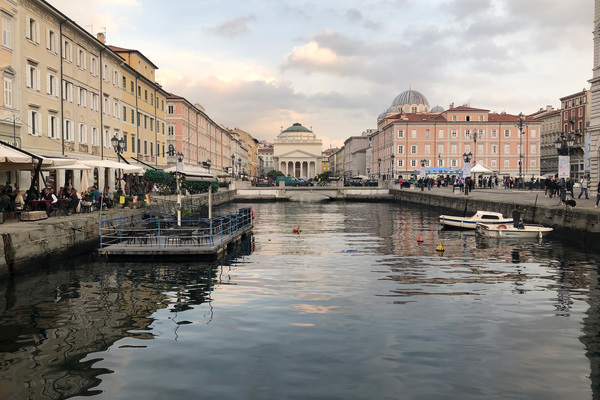Candidate: Trieste
Location: Italy
Category: The European City of the Year Award (Winner)
Year: 2022
Other finalists in this category: Málaga, Spain and Mechelen, Belgium
Introduction
Trieste is a coastal city on the Adriatic Sea, situated in the north-eastern corner of Italy on a narrow 8km strip of land from the Slovenian border. It is a beautiful, compact city that looks out to the Gulf of Trieste and is protected by the steep slopes of the surrounding karst escarpment.
These natural constraints have contained the city’s physical growth; while it is compact and dense, there is a long coastline and a strong visual connection with the sea and hills across the city. Trieste’s history, culture, character, and identity are all deeply influenced by this special relationship between sea, city, and karst plateau. It has informed the urban development of the city, and consciously informs people’s relationship with the city. It is a key ingredient in making Trieste unique and exceptional.
Arriving from the north, the escarpment reveals a spectacular panorama over the city, along the coast and out to sea. Within the city centre, many of the main city spaces open towards the sea, there is a long waterfront, while many streets terminate with views of the green hills.
Cultural diversity is another element of Trieste’s identity. Trieste is at the intersection of Latin, Germanic, and Slavic cultures, where central Europe meets the Mediterranean Sea. These influences are evident throughout the city - in the urban planning, architecture, food, language, and culture. Trieste has a unique sense of place, distinctive identity, and cultural resonance unlike any other city, that for centuries has blended the best of these cultural influences.
Historically, Trieste has been the key entry port for ‘Middle Europe’ and the Adriatic Corridor and with strong trading links to the Far East and China. Trieste has continued as a major trading port, with substantial trading, shipping, and insurance sectors. The inclusion of the former Yugoslavian states of Slovenia and Croatia as part of the EU has helped strengthen Trieste’s immediate hinterland. With strategic transnational infrastructural investment, Trieste is re-establishing its and building upon its historical role, as a regional trans-state city, connected internationally, as opposed to a ‘backwater’ city in the north-eastern corner of Italy, which it had become since 1918.









